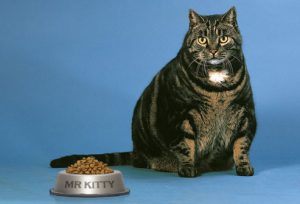Loss of appetite is one of the earliest signs that something is not right with your cat. Sometimes a cat won’t eat due to a slight stomach upset but this should not last for more than a day. His interest in food should have come back within 24 hours. Otherwise, it is imperative to have him checked by his veterinarian. Another thing to look out for is if your cat won’t eat and has trouble walking too. Lack of physical activity could be a secondary condition to not eating or it may be a totally separate problem.

If a cat won’t eat and has trouble walking for 24 hours there is usually something wrong.
Do You Want To Know Why Your Cat Won’t Eat?
The list of causes why a cat won’t eat can be pretty lengthy and but here are the more commonly encountered ones and a few examples:
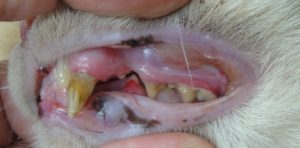
Inflamed gums are painful and cat will not want to eat.
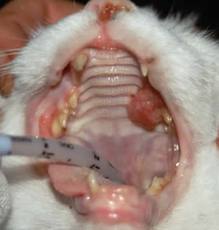
Tumor in the mouth causes difficulty and pain in eating.
· Conditions affecting the mouth: tooth and gum problems, abscess, tumors
· Gastrointestinal issues: inflammation, presence of worms, obstruction
· Kidney and Liver disease: toxin build-up in the blood causes nausea and vomiting
· Other: stress from recent vaccination, change in diet, anxiety due to change in environment
. Cats sometimes change their preference for food, see
here
Do You Want To Know Why Your Cat Won’t Eat and Has Trouble Walking?
If your has trouble walking it could be the direct result of the calorie deficiency and dehydration due to the cat not eating and drinking. It may also be an independent issue that may have contributed to the cat losing its appetite to eat. Here are some suspect conditions when your cat has trouble walking:
· Pain: originating from either conditions related to nerves, muscles, or bone
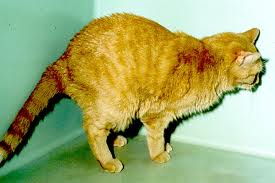
Difficulty walking may be due to a muscular or neurological problem
· Diabetes: can cause weakness of the hind limbs
· Kidney and Liver disease: toxin build up in the blood can cause incoordination in movement, anemia can cause poor oxygenation of the blood causing weakness
· Urinary blockage and constipation: may cause discomfort that looks like difficulty walking
· Blood clot: may affect blood supply of the limbs causing sudden trouble walking
What Should I Do?
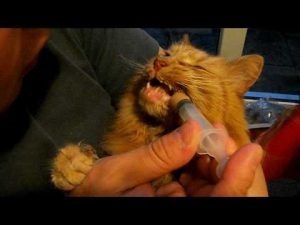
Syringe feed every few hours to meet caloric requirements.
When a cat refuses to eat, keep in mind that the most time you can afford to wait and observe is 24 hours. During this waiting period you can institute home care by syringe feeding with a semisolid diet of wet cat food and water every 4-6 hours to supply calories and prevent dehydration. A cat who is not eating again within one day is ill and you needs to take it to a veterinarian. If your cat won’t eat and has trouble walking it could be due to certain diseases. Such diseases have overlapping symptoms so a comprehensive physical exam and laboratory tests need to be done to identify cause.

Encourage your cat to drink water during this time. If getting your cat to drink water is a consistent issue please consider investing in a cat water fountain.
The physical exam should include a neurologic exam and listening for abnormal heart and lung sounds. Blood tests can check for anemia, infection, liver and kidney disease among other conditions. Fecalysis, urinalysis and x-rays may also be performed.
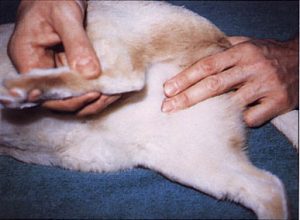
The veterinarian will conduct a neurologic examination.
Tips for Everyday Awareness
In general, as a pet parent, you need to be observant and be aware of your cat’s normal physical appearance, behaviour, appetite, grooming habits and activity. Your cat depends on you to notice immediately when something is off. Make it routine also to check on your cat’s eyes and nose for discharges, check the mouth for any tooth or gum problems and the colour of the gums. Watch out for sneezing, coughing, breathing difficulty, vomiting, change in litterbox habits, abnormal gait and excessive vocalisation. Feel your cat from head to tail for any lumps and bumps while at the same time checking for fleas and areas of lost fur. Doing these regularly, you will be able to catch a problem early and it will help to make its resolution easier.







